COVID-19: TCTMD’s Dispatch for October Week 1
We’re curating a list of COVID-19 research and other useful content, and updating it regularly.
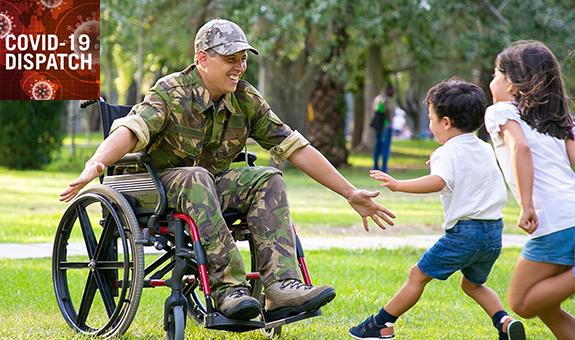
Since March 2020, TCTMD reporter Todd Neale has been writing up breaking news and peer-reviewed research related to COVID-19 every weekday. In July 2021, we transitioned to Mondays, Wednesdays, and Fridays. If you have something to share, tell us. All of our COVID-19 coverage can be found on our COVID-19 Hub.
October 8, 2021
Just 56% of the United States is fully vaccinated against COVID-19, and 65% have had at least one dose, the Centers for Disease Control and Prevention announced yesterday.
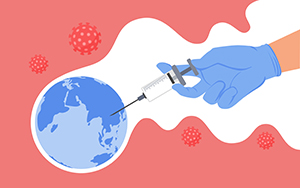 A New York Times story explores the lagging rates of vaccinations and why health authorities are worried about what this means heading into winter. According to the Times’ “vaccine tracker” about 47% of the world has received at least one dose. Among the top 15, the most vaccinated country is the United Arab Emirates, where 96% of the population has had at least one dose. Portugal is in second place at 87%. Cuba, Malta, Qatar, Singapore, Chile, Cambodia, and Spain all have rates in the 80s, while Uruguay, Mainland China, Canada, Norway, and Iceland are at 78% or higher.
A New York Times story explores the lagging rates of vaccinations and why health authorities are worried about what this means heading into winter. According to the Times’ “vaccine tracker” about 47% of the world has received at least one dose. Among the top 15, the most vaccinated country is the United Arab Emirates, where 96% of the population has had at least one dose. Portugal is in second place at 87%. Cuba, Malta, Qatar, Singapore, Chile, Cambodia, and Spain all have rates in the 80s, while Uruguay, Mainland China, Canada, Norway, and Iceland are at 78% or higher.
Results of the HEP-COVID anticoagulation trial have been published in JAMA Internal Medicine. Among 253 hospitalized adults, the incidence of major thromboembolism or death was 28.7% in those who received a therapeutic dose of low-molecular-weight heparin versus 41.9% in those treated with prophylactic/intermediate-dose heparins, a statistically significant difference that was driven by a reduction in thromboembolism. Of note, however, the benefit was restricted to patients who were not in the ICU.
Pfizer/BioNTech has formally applied to the US Food and Drug Administration (FDA) to have its vaccine authorized for emergency use in children ages 5-11. CIDRAP explores the details.
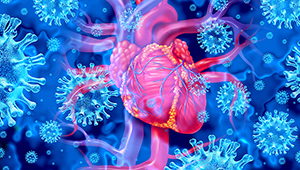 Acute myocarditis is not a frequent complication associated with either of the mRNA-based COVID-19 vaccines, and it typically carries minimal short-term clinical consequences, data from large healthcare organizations in the United States and Israel show. In all, three major studies were published this week: one in JAMA Internal Medicine and two in the New England Journal of Medicine. TCTMD’s Todd Neale sums up the data in an in-depth story.
Acute myocarditis is not a frequent complication associated with either of the mRNA-based COVID-19 vaccines, and it typically carries minimal short-term clinical consequences, data from large healthcare organizations in the United States and Israel show. In all, three major studies were published this week: one in JAMA Internal Medicine and two in the New England Journal of Medicine. TCTMD’s Todd Neale sums up the data in an in-depth story.
Also in the NEJM this week, two papers explore waning immunity following the Pfizer/BioNTech vaccine—one in Qatar, one in Israel. Both document a rapid decline in effectiveness following the second dose, but at least in the Qatar analysis, lasting protection against hospitalization and death for 6 months after the second dose. Decreased antibody responsive was most notable in older adults and in people with immunosuppression, the Israeli data show. Given this emerging information, an audio editorial by NEJM editors discusses the pros and cons of boosters.
Whether the conventional plasma D-dimer assay used for decades to diagnose or rule out pulmonary embolism (PE) is also useful in the setting of COVID-19 PE has been controversial. Now investigators who retrospectively reviewed D-dimer results among 287 patients with COVID-19 and suspected PE say that using traditional assay cut points to exclude PE falls short. “All hospitalized patients with COVID-19 and radiographic evidence of PE had plasma D-dimer levels of 0.05 μg/mL or greater,” they write in JAMA Network Open. “If using D-dimer to exclude patients with PE, the increased values we found among 92.3% of patients suggest that this assay would be less useful than in the populations in which it was originally validated, among which a minority of patients had increased D-dimer values. Setting higher D-dimer thresholds was associated with improved specificity at the cost of an increased false-negative rate that could be associated with an unacceptable patient safety risk.”
A review of the US Vaccine Adverse Event Reporting System (VAERS) found 130 cases of presumed Guillain-Barré syndrome (GBS) associated with the Janssen/Johnson & Johnson) COVID-19 vaccine, investigators write in JAMA. Median time to onset was 13 days, with 105 cases appearing within 21 days and 123 cases occurring within 42. In all, 121 were serious and one patient died. The results suggest a “potential small but statistically significant safety concern” for GBS with this vaccine, authors say. “However, the findings are subject to the limitations of passive reporting systems and presumptive case definition, and they must be considered preliminary pending analysis of medical records to establish a definitive diagnosis.”
 An analysis of household infections conducted in New York City and several counties in Utah shows that children have similar risks of SARS-CoV-2 as adults, but are more likely to have asymptomatic infections. Incidence rates per 1,000 person-weeks were 6.3 for children aged 0 to 4 years, 4.4 for those aged 5 to 11 years, 6.0 for those aged 12 to 17 years, and 5.1 for adults 18 years and older. But while just 12% of adults had asymptomatic infections, more than half of children age 0 to 4 had no symptoms. Notably, the mean risk that whole households would become infected when one or more members fell ill was 52% overall, but higher in New York City (80% vs 44%), “which may be attributable to differences by site in household crowding or preventive behaviors, community transmission of SARS-CoV-2, or circulating virus lineages,” authors write in JAMA Pediatrics.
An analysis of household infections conducted in New York City and several counties in Utah shows that children have similar risks of SARS-CoV-2 as adults, but are more likely to have asymptomatic infections. Incidence rates per 1,000 person-weeks were 6.3 for children aged 0 to 4 years, 4.4 for those aged 5 to 11 years, 6.0 for those aged 12 to 17 years, and 5.1 for adults 18 years and older. But while just 12% of adults had asymptomatic infections, more than half of children age 0 to 4 had no symptoms. Notably, the mean risk that whole households would become infected when one or more members fell ill was 52% overall, but higher in New York City (80% vs 44%), “which may be attributable to differences by site in household crowding or preventive behaviors, community transmission of SARS-CoV-2, or circulating virus lineages,” authors write in JAMA Pediatrics.
An accompanying editorial explores whether young children can also contribute to household transmissions, concluding, “If lessons are to be learned . . . and if we agree to acknowledge the role of children in the transmission of respiratory viral infections, then pediatric populations, from infants to adolescents, must be included in pandemic preparedness, disease burden assessment, timely vaccine and therapeutics research, and strategies and policies for the control of outbreaks and pandemics from day 1 without delay.”
October 6, 2021
 The number of COVID-19 cases in the United States has been holding at 101,000 a day, on average, for the past week, down 24% from 2 weeks ago, the New York Times reports. Deaths have decreased by 12% and hospitalizations are down 20%, averaging 75,000 a day for the first time since midsummer. But with most deaths occurring in unvaccinated Americans—and 68 million still not inoculated—public health officials say the country remains “vulnerable to continued surges. ‘We’re not out of danger,’” Ali Mokdad, PhD, a University of Washington epidemiologist who is a former Centers for Disease Control and Prevention (CDC) scientist, said in an interview this week. ‘This virus is too opportunistic and has taught us one lesson after another.’”
The number of COVID-19 cases in the United States has been holding at 101,000 a day, on average, for the past week, down 24% from 2 weeks ago, the New York Times reports. Deaths have decreased by 12% and hospitalizations are down 20%, averaging 75,000 a day for the first time since midsummer. But with most deaths occurring in unvaccinated Americans—and 68 million still not inoculated—public health officials say the country remains “vulnerable to continued surges. ‘We’re not out of danger,’” Ali Mokdad, PhD, a University of Washington epidemiologist who is a former Centers for Disease Control and Prevention (CDC) scientist, said in an interview this week. ‘This virus is too opportunistic and has taught us one lesson after another.’”
Meanwhile, vaccination rates are climbing on the African continent, albeit painfully slowly. “Currently, 4.5% of the African population is fully vaccinated, well below the average 55% to 66% levels seen in the United States and Europe,” CIDRAP reports. The World Health Organization (WHO) warns that, at the current rate, hopes of fully vaccinating 40% of the population won’t be realized. “The WHO said African countries have received 201 million doses, which makes up 2.4% of the world's distribution.”
The recommended double dose of the Pfizer/BioNTech vaccine is 90% effective against COVID-19 hospitalizations for all variants, including Delta, for at least 6 months, according to a new analysis published in the Lancet. “Effectiveness against all SARS-COV-2 infections declined over the study period, falling from 88% within 1 month after receiving two vaccine doses to 47% after 6 months,” a press release explains. Investigators led by Sara Tartof, MD, say this reduction is likely due to waning immunity rather than the Delta variant. “In line with the recent FDA and CDC recommendations, considerations for booster shots should take global COVID-19 vaccine supply into account as people in many countries around the world have not yet received a primary vaccination series,” Tartof commented.
Among about 2.4 million adult members of the Kaiser Permanente Southern California (KPSC) integrated health system, the incidence of acute myocarditis after the second dose of vaccines from Pfizer/BioNTech or Moderna was 5.8 per million people, according to a research letter published online this week in JAMA Internal Medicine. “We continue to believe strongly that the benefits of the COVID-19 vaccine greatly outweigh the risks,” senior author Mingsum Lee, MD, PhD, told TCTMD via email, calling the incidence of myocarditis very low. “Getting the COVID-19 vaccine is one of the best things people can do to protect themselves from getting or spreading COVID-19.” Stay tuned for TCTMD’s full story.
An analysis of 212,326 cases of COVID-19 reported between February 7 and June 26, 2021, in Ontario, Canada, confirms that SARS-CoV-2 variants of concern (VOCs), especially the Delta variant, are more virulent than the native strain of the virus and more likely to lead to hospitalizations, ICU admissions, and death, researchers report in CMAJ. Confirming other studies from the UK and Singapore, people infected with VOCs were significantly younger and less likely to have comorbidities. “With Alpha, Beta, and Gamma VOC infections, risks of hospitalization were 52% higher, admission to ICU was 89% higher, and death was 51% higher; with Delta infections, risks were 108%, 235%, and 133% higher, respectively,” a press release notes.
 “COVID toes” and chilblain-like lesions have been a rare hallmark feature of COVID-19; now researchers writing in the British Journal of Dermatology say they’ve uncovered the mechanism of injury. In an analysis of 63 patients, investigators conclude that the injury originates both from an immune system reaction and endothelial cells involvement. “Our findings support an activation loop in the skin in chilblain-like lesions associated with endothelial alteration and immune infiltration of cytotoxic and type I interferon-polarized cells leading to clinical manifestations,” the authors conclude.
“COVID toes” and chilblain-like lesions have been a rare hallmark feature of COVID-19; now researchers writing in the British Journal of Dermatology say they’ve uncovered the mechanism of injury. In an analysis of 63 patients, investigators conclude that the injury originates both from an immune system reaction and endothelial cells involvement. “Our findings support an activation loop in the skin in chilblain-like lesions associated with endothelial alteration and immune infiltration of cytotoxic and type I interferon-polarized cells leading to clinical manifestations,” the authors conclude.
Low antibody response among critically ill patients predicts worse survival, according to an analysis of 92 ICU patients published in the Journal of Internal Medicine. Patients with strong antibody responses against SARS-CoV-2 had low levels of viral RNA in their blood, whereas those with poor antibody responses had high viral RNA levels and disseminated viral proteins in the blood. “The results could help establish the optimal antibody levels needed for an individual to overcome COVID-19 when critically ill,” a press release notes, quoting study author Jesús F. Bermejo-Martin, MD, PhD, as saying: “Our findings support that treatment with exogenous antibodies in COVID-19 should be personalized, reserving this therapy for those patients with absent or low endogenous antibodies levels.”
The US government is planning to spend $1 billion to “quadruple” the availability of at-home rapid coronavirus tests by later this year, the New York Times reports. “By December, 200 million rapid tests will be available to Americans each month, with tens of millions more arriving on the market in the coming weeks,” an official told the Times. On Monday, the Food and Drug Administration (FDA) authorized an emergency use authorization for an additional at-home test, this one made by ACON Laboratories—no prescription needed.
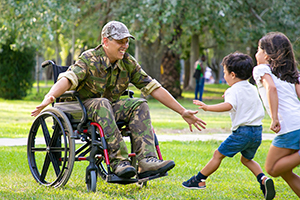 Rapid deployment of COVID-19 vaccination among US veterans enrolled in the Veterans Health Administration (VHA)—a racially and ethnically diverse group with high rates of comorbidities—was highly effective in reducing the risks of COVID-19 infection and hospitalization, a new analysis shows. In JAMA Network Open, researchers report that among more than 6.6 million veterans aged 65 and older, vaccine effectiveness in the first 3 months was 95% among those fully vaccinated and 64% for those partially vaccinated. No fully vaccinated veterans died over the vaccine rollout period. “The findings of this study suggest that effectiveness of these vaccines, combined with their equitable and efficient deployment, may have resulted in attenuated COVID-19 disease burden among all VHA-enrolled veterans and specific high-risk populations.”
Rapid deployment of COVID-19 vaccination among US veterans enrolled in the Veterans Health Administration (VHA)—a racially and ethnically diverse group with high rates of comorbidities—was highly effective in reducing the risks of COVID-19 infection and hospitalization, a new analysis shows. In JAMA Network Open, researchers report that among more than 6.6 million veterans aged 65 and older, vaccine effectiveness in the first 3 months was 95% among those fully vaccinated and 64% for those partially vaccinated. No fully vaccinated veterans died over the vaccine rollout period. “The findings of this study suggest that effectiveness of these vaccines, combined with their equitable and efficient deployment, may have resulted in attenuated COVID-19 disease burden among all VHA-enrolled veterans and specific high-risk populations.”
October 4, 2021
The global COVID-19 death total has topped 5 million, according to a Reuters tally. More than half of those deaths have occurred in just five countries—the United States (leading with more than 700,000), Russia, Brazil, Mexico, and India. Over the last week, there were an average of 8,000 deaths each day across the world, though in a positive sign the death rate has been slowing.
The Delta-driven COVID-19 outbreak in Australia appears to be plateauing, Reuters reports. “The Australian government wants all COVID-19 restrictions, including travel bans, to be lifted when 80% of the population above 16 is fully vaccinated. It expects that target will be reached in mid-November.” Right now, 80% of Australians have received at least their first shot.
 Australia’s island neighbor New Zealand is giving up on its “zero-COVID” strategy after 7 weeks of lockdown in Auckland have failed to stem a surge in cases caused by the Delta variant, the New York Times reports. Prime Minister Jacinda Ardern acknowledged the shift, saying: “With Delta, the return to zero is incredibly difficult, and our restrictions alone are not enough to achieve that quickly. In fact, for this outbreak, it’s clear that long periods of heavy restrictions has not got us to zero cases.”
Australia’s island neighbor New Zealand is giving up on its “zero-COVID” strategy after 7 weeks of lockdown in Auckland have failed to stem a surge in cases caused by the Delta variant, the New York Times reports. Prime Minister Jacinda Ardern acknowledged the shift, saying: “With Delta, the return to zero is incredibly difficult, and our restrictions alone are not enough to achieve that quickly. In fact, for this outbreak, it’s clear that long periods of heavy restrictions has not got us to zero cases.”
Late last week, the US Centers for Disease Control and Prevention (CDC) reported that the 7-day average of new COVID-19 cases dropped by 15% compared with the week before, CIDRAP News reports. Hospitalizations also fell by 15%, although deaths remained steady at 1,476 per day. “Deaths remain substantially higher in states with low vaccination coverage,” CDC Director Rochelle Walensky, MD, said during a White House press briefing.
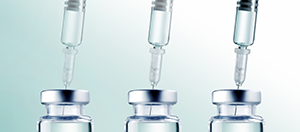 Extra doses of the COVID-19 vaccines from Pfizer/BioNTech and Moderna “may be given to people with severely weakened immune systems, at least 28 days after their second dose,” according to the European Medicines Agency (EMA). The EMA’s human safety committee also concluded that boosters doses of the Pfizer/BioNTech vaccine “may be considered at least 6 months after the second dose for people aged 18 years and older.” It continues to evaluate data regarding Moderna boosters.
Extra doses of the COVID-19 vaccines from Pfizer/BioNTech and Moderna “may be given to people with severely weakened immune systems, at least 28 days after their second dose,” according to the European Medicines Agency (EMA). The EMA’s human safety committee also concluded that boosters doses of the Pfizer/BioNTech vaccine “may be considered at least 6 months after the second dose for people aged 18 years and older.” It continues to evaluate data regarding Moderna boosters.
On Friday, Governor Gavin Newsom announced that California would become the first state to require COVID-19 vaccination for students starting in the term following full US Food and Drug Administration (FDA) approval of a vaccine in their age group. Based on the current situation, the requirement for children 12 and older (grades 7 to 12) is expected to take effect on July 1, 2022.
 The FDA announced that there will be two upcoming advisory committee meetings to discuss use of booster doses of the Moderna and Janssen (Johnson & Johnson) vaccines in adults (on October 14 and 15) and to consider allowing the Pfizer/BioNTech vaccine to be used in children ages 5 to 11 (on October 26).
The FDA announced that there will be two upcoming advisory committee meetings to discuss use of booster doses of the Moderna and Janssen (Johnson & Johnson) vaccines in adults (on October 14 and 15) and to consider allowing the Pfizer/BioNTech vaccine to be used in children ages 5 to 11 (on October 26).
A study in JAMA Network Open suggests the impact of methylprednisolone in nonintubated patients with severe COVID-19 pneumonia differs based on admission ferritin levels. Treatment was associated with lower mortality and death/mechanical ventilation rates only in patients with ferritin levels in the upper tertile (1,322 ng/mL or higher), with no impact seen at lower levels.
Convalescent plasma has “a low likelihood of providing improvement in the number of organ support-free days” in critically ill patients with COVID-19, according to results of the REMAP-CAP trial published in JAMA. The convalescent plasma intervention was halted for futility back in January.
 Use of multiple prevention strategies appears to prevent large COVID-19 outbreaks in overnight youth summer camps, a study in Morbidity and Mortality Weekly Report shows. At nine such camps with high vaccination coverage, prearrival and frequent testing, and other measures, there were only nine lab-confirmed COVID-19 cases and no secondary infections among more than 7,000 campers and staff members. Another paper describes what can happen without close adherence to such precautions, detailing 28 outbreaks with a total of 321 COVID-19 cases among about 3,000 campers and staff members in summer camps in Louisiana.
Use of multiple prevention strategies appears to prevent large COVID-19 outbreaks in overnight youth summer camps, a study in Morbidity and Mortality Weekly Report shows. At nine such camps with high vaccination coverage, prearrival and frequent testing, and other measures, there were only nine lab-confirmed COVID-19 cases and no secondary infections among more than 7,000 campers and staff members. Another paper describes what can happen without close adherence to such precautions, detailing 28 outbreaks with a total of 321 COVID-19 cases among about 3,000 campers and staff members in summer camps in Louisiana.
Todd Neale is the Associate News Editor for TCTMD and a Senior Medical Journalist. He got his start in journalism at …
Read Full Bio


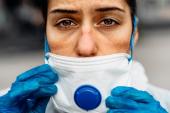

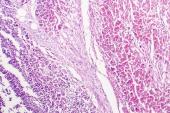
Comments